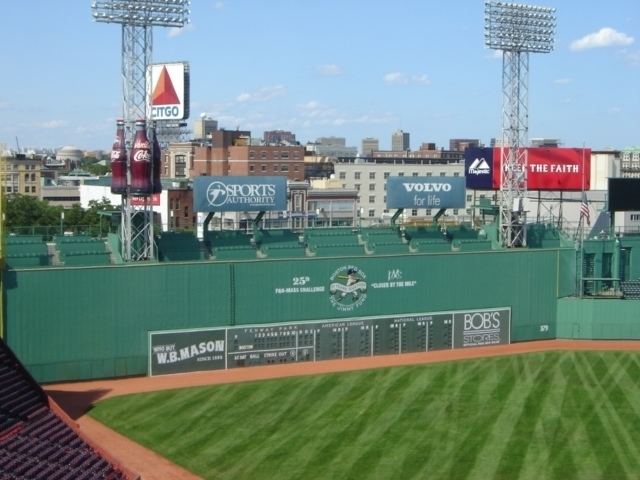 | ||
The warning track is the part of the baseball field that is closest to the wall or fence and is typically made of dirt, instead of grass or artificial turf like most of the field. It runs parallel to the ballpark's wall and looks like a running track. The change of terrain from grass to dirt serves as a "warning" for fielders trying to make a deep catch that they are running out of room, since it is often difficult for the fielder to keep his eye on a fly ball while keeping track of his position relative to the wall.
Despite the warning track's presence, it is common to see outfielders crash into the wall to make a catch, due to a desire to field the play regardless of the outcome and/or because they fail to register the warning in time (as the track is on the ground, an outfielder pursuing a fly ball in the air will be looking in the opposite direction and thus the warning track would be out of the outfielder's line of sight in any event).
The "track" part of the term comes from Old Yankee Stadium, where an actual running track was built for the use of track and field events. It was soon realized that the track also helped outfielders know when they were approaching the wall, and soon every ballpark was using one. However, there still are professional fields without a proper warning track, such as Tropicana Field, which uses brown-colored turf. The Tokyo Dome at one point had no warning track.
The average length of the warning track (depending on the ballpark) is 690 ft while the width is 15 ft.
Like Tropicana Field, Toronto's Rogers Centre features a warning track with merely brown-colored turf due to its former multipurpose configuration, though this may change if and when the stadium switches to a natural grass field for the Blue Jays with the 2016 departure of the Canadian Football League's Argonauts to BMO Field.
